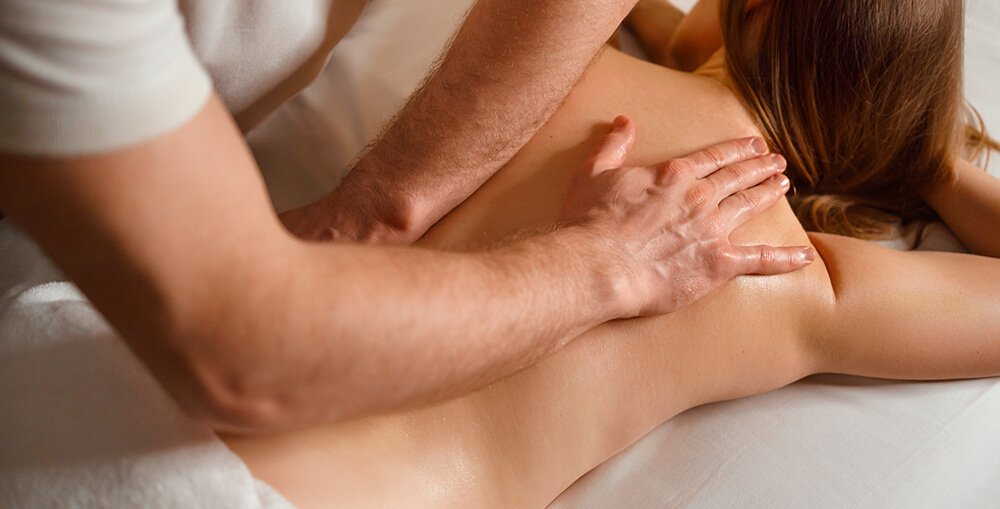Is A Deep Tissue Massage What Your Muscles Are Needing?
Table of Contents Show
Quick Summary
This article delves into the transformative benefits of deep tissue massage, highlighting how it can relieve muscle pain and stiffness while promoting relaxation for both body and mind.
You'll learn about the techniques used in deep tissue massage, its effectiveness in addressing issues like sports injuries, chronic pain, and stress, and how it improves overall well-being. Whether you're an athlete or dealing with daily stress, discover how deep tissue massage can enhance your quality of life and provide answers to your health concerns.
Imagine the relief of having the tension in your muscles gently eased away, the stress of the day melting as skilled hands work through the knots and tightness.
A Deep tissue massage provides numerous physical and psychological benefits. It effectively alleviates muscle pain and stiffness while offering stress-relieving relaxation for the body and mind.
Whether you're an athlete recovering from an intense workout or someone struggling with chronic pain, this powerful therapy can bring profound relief.
Deep tissue massage is primarily used to address musculoskeletal issues such as strains and sports injuries. It involves applying sustained pressure through slow, deep strokes.
This technique can target the inner layers of muscles and connective tissues, helping to break down scar tissue formed after an injury and easing muscle tension.
Additionally, deep tissue massage may facilitate faster healing by enhancing blood flow and reducing inflammation.
A 2014 study with 59 participants found that deep tissue massage effectively reduced pain in those with chronic low back pain, with effects comparable to nonsteroidal anti-inflammatory drugs like ibuprofen (Advil).
Many have found deep tissue massage beneficial for:
Sports injuries
Fibromyalgia
High blood pressure
Tennis elbow
So we believe that this article will shed more light on Deep Tissue Massage and encourage you to continue reading as we'll explore how deep tissue massage can transform your well-being, helping you feel more relaxed, revitalized, and ready to take on life's challenges.
Discover the incredible benefits of this therapy and how it can enhance your overall quality of life.
What Is a Deep Tissue Massage?
A deep tissue massage incorporates deep, slow strokes to apply sustained and varying pressure to target your musculoskeletal system. This technique, created by Canadian physiotherapist Therese Pfrimmer, aims to treat deeper muscles and tissues effectively.
Deep tissue massages are particularly beneficial for individuals who engage in high-intensity physical activities. Registered Massage Therapists often see clients with strains, lower back pain, or sports-related injuries.
For those who regularly participate in strenuous physical exercise, such as running or swimming, a bi-weekly deep tissue massage is recommended to reduce strain and knots in muscles. Sessions typically last between 75 to 90 minutes.
What Techniques Are Used in a Deep Tissue Massage?
Several techniques can be employed in a deep tissue massage, all based on the principle of applying varying sustained pressure to break up scar tissue and muscle knots or adhesions.
These techniques focus on major muscle groups, such as the neck and lower back, and stress-bearing regions like shoulders, neck, and hips.
Deep tissue massage uses a variety of specialized techniques that differ from other types of massage, such as Swedish or hot stone massage, which primarily target the surface layers of muscles. Here’s an overview of the key techniques involved in a deep tissue massage and how they benefit the body:
-
In deep tissue massage, therapists use slow, deliberate strokes to apply even pressure deep into the muscle tissue. These slow strokes reach the deeper muscle layers and connective tissues that can't be effectively accessed with faster movements, making them particularly useful for reducing chronic muscle tension and breaking up scar tissue.
-
This technique involves applying sustained pressure using fingers, knuckles, or elbows. It's commonly used to release muscle knots and adhesions, with therapists often employing various tools to deliver pressure while protecting their hands.
-
Friction involves applying pressure in a back-and-forth or circular motion to stimulate blood flow and create heat in specific areas. This helps break down scar tissue and adhesions, reducing pain and improving movement.
-
This variation of friction applies pressure perpendicular to the muscle fibers to break down scar tissue and adhesions more effectively, enhancing muscle flexibility and reducing discomfort.
-
Muscle stripping uses deep, gliding pressure along the length of a muscle, from origin to insertion. This technique helps realign muscle fibers, break down adhesions, and decrease muscle tension, promoting better muscle function.
-
In this advanced method, the therapist applies firm pressure to a tense muscle while the client moves the affected muscle group in a specific direction. This combination of movement and pressure breaks up adhesions, increases range of motion, and reduces pain.
-
MET involves the client's active participation, where the therapist instructs them to resist using a specific muscle group while applying counter-pressure. This creates a therapeutic "tug of war," helping to lengthen shortened or spasmed muscles and improve range of motion.
-
This specialized technique targets the connective tissue or fascia, applying slow, sustained pressure to release fascial restrictions. It alleviates chronic tension patterns and promotes overall muscle relaxation.
-
These techniques focus on applying pressure to hypersensitive nodules or "trigger points" in muscle tissue using fingers, knuckles, or accessories like massage balls. This pressure reduces muscle tension and alleviates pain, addressing specific areas of discomfort.
Deep tissue massage techniques often involve more intense pressure than other massage types, which can sometimes lead to mild discomfort or muscle soreness afterward. However, it’s crucial to remember that while deep tissue massage can feel intense, it should never be painful. Pain during the massage can cause muscles to tense up, counteracting the benefits of the treatment.
At West End Wellness, our experienced therapists are dedicated to ensuring your comfort and achieving the best possible therapeutic outcomes.
Discover the benefits of deep tissue massage by booking a session with us today and experience relief from muscle tension and enhanced overall well-being.
Deep tissue massage benefits fall into physical and well-being camps. While most massages focus solely on the aspect of relaxation. Learn 6 of deep tissue massage benefits in this article.
What Does a Deep Tissue Massage Do for the Body?
Deep tissue massage is a specialized technique designed to relieve severe tension in the muscles and the connective tissue or fascia. It is particularly beneficial for individuals who engage in rigorous physical activities or those who suffer from chronic pain. Let’s explore the key benefits of deep tissue massage and how it can positively impact your body.
Relieves Chronic Pain
Deep tissue massage is highly effective in alleviating chronic pain. By applying firm pressure and slow strokes to reach deeper layers of muscle and fascia, this massage technique helps to break down scar tissue and adhesions that cause discomfort and pain. It’s particularly beneficial for conditions such as lower back pain, neck pain, and shoulder stiffness.
Reduces Muscle Tension
One of the primary benefits of deep tissue massage is its ability to reduce muscle tension. The massage therapist uses deep, deliberate strokes to target the inner layers of your muscles, helping to release knots and relieve built-up tension. This process alleviates pain and enhances your range of motion and flexibility.
Blood Circulation
Improved blood circulation is another significant advantage of deep tissue massage. The pressure applied during the massage helps to stimulate blood flow, which delivers more oxygen and nutrients to your muscles and tissues.
This increased circulation promotes healing and reduces inflammation, helping your body recover faster from injuries and intense physical activities.
Promotes Relaxation and Stress Relief
While deep tissue massage is known for its intensity, it also provides profound relaxation and stress relief. The release of muscle tension and improved circulation contribute to a sense of well-being and relaxation.
Additionally, deep tissue massage can reduce levels of the stress hormone cortisol, promoting a state of calm and reducing anxiety.
Enhances Athletic Performance and Recovery
For athletes, deep tissue massage can be a game-changer. Regular sessions can help to prevent injuries by keeping muscles flexible and reducing the risk of strains.
It also aids in the recovery process by reducing muscle soreness and speeding up the healing of muscle fibres. Athletes often find that deep tissue massage helps them perform better and recover more quickly after intense training sessions or competitions.
Aids in Detoxification
Deep tissue massage assists in the detoxification process by promoting the flow of lymphatic fluid, which helps to remove toxins and waste products from the body. This detoxifying effect can boost your immune system and improve overall health, making you feel more energized and vibrant.
Supports Posture Improvement
Poor posture can lead to chronic pain and discomfort. Deep tissue massage addresses the underlying issues contributing to poor posture, such as muscle imbalances and tightness. Deep tissue massage can help you maintain a healthier posture by releasing these tensions and improving muscle alignment, reducing pain and preventing future issues.
Conclusion
Deep tissue massage offers a multitude of benefits, from relieving chronic pain and reducing muscle tension to improving blood circulation and promoting relaxation.
This powerful therapy can transform your well-being, whether you're an athlete recovering from intense training or someone seeking relief from daily stress and discomfort.
By targeting the deeper layers of muscles and connective tissues, deep tissue massage helps break down scar tissue, reduce inflammation, and enhance your overall health. We hope this article has provided valuable insights into the benefits of deep tissue massage and inspired you to experience its positive effects.
Take the first step towards a pain-free, healthier lifestyle and consider incorporating deep tissue massage into your wellness routine.
If you have any further doubts or questions regarding this subject or another treatment, contact one of our experienced Acupuncturists or Registered Massage Therapists here at West End Wellness Clinic. You can either give us a call or make an appointment.
Disclaimer: Please remember this article is for informational purposes only and should not replace professional medical advice. Please consult a healthcare provider or someone with the correct qualifications before starting any new exercise or treatment program.



